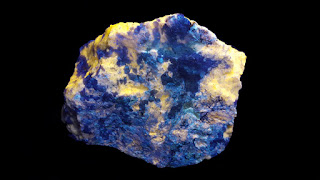Fluorescent Minerals
The following specimens are a few of those acquired at this year's Tucson gem show.
Fluorescent red calcite on quartz, from Cambokeels Mine, Weardale, England. According to mindat.org, the mine began operation in 1847, and was mined first for lead, then fluorite until its closure in 1989. The outer workings still feature an arched stone adit specifically designed for horses - there are some great pictures of this mine out there if you search.
Also with nicely formed and phantomed hexagonal "nailhead" crystals - was being sold as a white light specimen, not advertised as fluorescent. 4"x2"x1.5"
Fluorescent green hyalite opal from Zacatecas, Mexico. This material is so reactive, the fluorescence is clearly visible even in a brightly lit room. It also belongs to a rare breed of fluorescent minerals that are considered "daylight fluorescent." This means the opal will appear mostly clear under indoor, incandescent lighting, but viewing the specimen in sunlight provides enough UV to activate the fluorescence and make the opal appear green.
This piece also stood out for the large, greenish-clear nodule of opal right on top of the specimen - the opal from this locality tends to occur more commonly as a coating rather than a standalone "crystal." 3.5"x2"x0.5" (sawcut back)
Close up of the nodule, which has a diameter of roughly 10mm.
Fluorescent yellow scapolite (meionite) from Quebec, Canada, shown under longwave UV. While this piece didn't have as much scapolite as some (see
Esoterizona Stones 31), under shortwave it looked like this:
An unusual quantity of bright blue tremolite is visible along with the scapolite. This blue has previously been misidentified as diopside.
Same specimen, white light. 3.5"x3"x2"





































